The Samsung Galaxy S21, Samsung Galaxy S21 Plus, and Samsung Galaxy S21 Ultra are the latest 5G flagships from Samsung. They represent the pinnacle of consumer-ready technology in the conventional smartphone form factor. These phones come with class-leading technologies, and for the first time ever, a phone outside of the Galaxy Note lineup is offering the coveted S Pen experience.
Navigate this page:

Galaxy S21 Ultra, 72 hours later: 5 takeaways after using Samsung’s best phone
Samsung Galaxy S21 series: Specifications
| Specifications |
Samsung Galaxy S21 |
Samsung Galaxy S21+ |
Samsung Galaxy S21 Ultra |
| Build |
- Aluminum mid-frame
- Plastic back
- Gorilla Glass Victus front
|
- Aluminum mid-frame
- Gorilla Glass Victus back
- Gorilla Glass Victus front
|
- Aluminum mid-frame
- Gorilla Glass Victus back
- Gorilla Glass Victus front
|
| Dimensions & Weight |
- 151.7 x 71.2 x 7.9 mm
- 171 grams
|
- 161.5 x 75.6 x 7.8 mm
- 202 grams
|
- 165.1 x 75.6 x 8.9 mm
- 229 grams
|
| Display |
- 6.2″ FHD+ Dynamic AMOLED 2X flat display
- 2400 x 1080 pixels
- 421 PPI
- 120Hz variable refresh rate
- 20:9 aspect ratio
- HDR10+
- 1300nits peak brightness
- Always-On display
- Infinity-O display
|
- 6.7″ FHD+ Dynamic AMOLED 2X flat display
- 2400 x 1080 pixels
- 394 PPI
- 120Hz variable refresh rate
- 20:9 aspect ratio
- 1300nits peak brightness
- HDR10+
- Always-On display
- Infinity-O display
|
- 6.8″ QHD+ Dynamic AMOLED 2X curved display
- 3200 x 1440 pixels
- 515ppi
- 120Hz variable refresh rate
- 120Hz at QHD+ supported
- 10-120Hz
- 20:9 aspect ratio
- 1500nits peak brightness
- HDR10+
- Always-On display
- Infinity-O display
|
| SoC |
- International: Exynos 2100:
- 1x ARM Cortex X1 @ 2.9GHz +
- 3x ARM Cortex A78 Cores @ 2.8GHz +
- 4x ARM Cortex A55 Cores @ 2.2GHz
- USA: Qualcomm Snapdragon 888:
- 1x Kryo 680 Prime Core @ 2.84GHz
- 3x Kryo 680 Performance Cores @ 2.4GHz
- 4x Kryo 680 Efficiency Cores @ 1.8GHz
|
- International: Exynos 2100:
- 1x ARM Cortex X1 @ 2.9GHz +
- 3x ARM Cortex A78 Cores @ 2.8GHz +
- 4x ARM Cortex A55 Cores @ 2.2GHz
- USA: Qualcomm Snapdragon 888:
- 1x Kryo 680 Prime Core @ 2.84GHz
- 3x Kryo 680 Performance Cores @ 2.4GHz
- 4x Kryo 680 Efficiency Cores @ 1.8GHz
|
- International: Exynos 2100:
- 1x ARM Cortex X1 @ 2.9GHz +
- 3x ARM Cortex A78 Cores @ 2.8GHz +
- 4x ARM Cortex A55 Cores @ 2.2GHz
- USA: Qualcomm Snapdragon 888:
- 1x Kryo 680 Prime Core @ 2.84GHz
- 3x Kryo 680 Performance Cores @ 2.4GHz
- 4x Kryo 680 Efficiency Cores @ 1.8GHz
|
| RAM & Storage |
- 8GB LPDDR5 + 128GB
- 8GB + 256GB
|
- 8GB LPDDR5 + 128GB
- 8GB + 256GB
|
- 12GB LPDDR5 + 128GB
- 12GB + 256GB
- 16GB + 512GB
|
| Battery & Charging |
- 4,000mAh
- 25W USB Power Delivery 3.0 fast charging
- 15W wireless charging
- 4.5 reverse wireless charging
- No charger in the box in most regions
|
- 4,800mAh
- 25W USB Power Delivery 3.0 fast charging
- 15W wireless charging
- 4.5 reverse wireless charging
- No charger in the box in most regions
|
- 5,000mAh
- 25W USB Power Delivery 3.0 fast charging
- 15W wireless charging
- 4.5 reverse wireless charging
- No charger in the box in most regions
|
| Security |
Ultrasonic In-Display Fingerprint Scanner |
Ultrasonic In-Display Fingerprint Scanner |
Ultrasonic In-Display Fingerprint Scanner |
| Rear Camera(s) |
- Primary: 12MP, wide-angle lens, f/1.8, 1/1.76″, 1.8µm, OIS, Dual Pixel AF
- Secondary: 12MP, ultra-wide-angle lens, f/2.2, 120° FoV, 1/2.55″, 1.4µm, Fixed Focus
- Tertiary: 64MP, telephoto lens, f/2.0, 1/1.76″, 0.8µm, PDAF, OIS
|
- Primary: 12MP, wide-angle lens, f/1.8, 1/1.76″, 1.8µm, OIS, Dual Pixel AF
- Secondary: 12MP, ultra-wide-angle lens, f/2.2, 120° FoV, 1/2.55″, 1.4µm, Fixed Focus
- Tertiary: 64MP, telephoto lens, f/2.0, 1/1.76″, 0.8µm, PDAF, OIS
|
- Primary: 108 MP, wide-angle lens, f/1.8, 79°, 24mm, 1/1.33″, 0.8µm (pre-nona-binning), OIS, PDAF, Laser AF
- Secondary: 12 MP, ultra-wide-angle lens, f/2.2, 120° FoV, 13mm, 1/2.55″, 1.4 µm, Dual Pixel AF
- Tertiary: 10 MP, telephoto lens, f/2.4, 35°, 72mm, 1/3.24″, 1.22µm, OIS, 3x optical zoom, Dual Pixel AF
- Quarternary: 10 MP, telephoto lens, f/4.9, 10°, 240mm, 1/3.24″, 1.22µm, OIS, 10x optical zoom, Dual Pixel AF
Video:
- 4K @ 60fps across all front and rear cameras
|
| Front Camera(s) |
10MP, f/2.2, 1.22µm, 80° FoV, Dual Pixel AF |
10MP, f/2.2, 1.22µm, 80° FoV, Dual Pixel AF |
40MP, f/2.2, 0.7µm, 80° FoV, PDAF |
| Port(s) |
USB 3.2 Type-C |
USB 3.2 Type-C |
USB 3.2 Type-C |
| Audio |
- Stereo speakers by AKG
- Dolby Atmos
|
- Stereo speakers by AKG
- Dolby Atmos
|
- Stereo speakers by AKG
- Dolby Atmos
|
| Connectivity |
- Bluetooth 5.1
- NFC
- Wi-Fi 6
- 5G
|
- Bluetooth 5.1
- NFC
- Wi-Fi 6
- 5G
|
- Bluetooth 5.1
- NFC
- Wi-Fi 6E
- 5G
|
| Software |
Samsung One UI 3.1 based on Android 11 |
Samsung One UI 3.1 based on Android 11 |
Samsung One UI 3.1 based on Android 11 |
| Other Features |
- IP68 water resistance
- ANT+
- Samsung DeX
- Knox
- Bixby Voice Assistant
- Google Discover pane
- MST support in some regions
|
- IP68 water resistance
- ANT+
- Samsung DeX
- Knox
- UWB
- Bixby Voice Assistant
- Google Discover pane
- MST support in some regions
|
- IP68 water resistance
- ANT+
- Samsung DeX
- Knox
- UWB
- Bixby Voice Assistant
- Google Discover pane
- Wacom Stylus and S Pen support (sold separately and stored externally)
- MST support in some regions
|
| Colors |
- Phantom Violet
- Phantom Gray
- Phantom White
- Phantom Pink
|
- Phantom Violet
- Phantom Gray
- Phantom White
- Samsung.com Exclusive:
|
- Phantom Gray
- Phantom White
- Samsung.com Exclusive:
- Phantom Titanium
- Phantom Navy
- Phantom Brown
|

Samsung Galaxy S21 / Galaxy S21 Plus / Galaxy S21 Ultra XDA Forums
Display
Let’s start with the display on the Galaxy S21 series. All three devices in the series get a Dynamic AMOLED 2x display, with a 120Hz variable refresh rate, a 20:9 aspect ratio, and HDR10+ support. All three devices have an Infinity-O display, which is just Samsung’s marketing term for centered hole-punch displays. You also get the latest Gorilla Glass Victus on the front across all three phones for scratch and drop protection. And as with previous Galaxy S models, the Galaxy S21 series also gets Always-On Display functionality.

Samsung Galaxy S21+
The primary difference between the three phones is the size of the display, going from 6.2″ on the regular Galaxy S21 to 6.7″ on the Plus and 6.8″ on the Ultra. Additionally, the regular and Plus variants have a relatively lower-end flat FHD+ panel. The Galaxy S21 Ultra is where things get a little interesting, as its display gets a subtle curve on the edges and a bump up to QHD+ resolution.

Samsung Galaxy S21 Ultra
It’s also the first time that a Samsung Galaxy flagship is not only getting QHD+ resolution and 120Hz refresh rate, but also 120Hz refresh rate with QHD+ resolution as the option. There’s also a difference in peak brightness, with the Ultra getting as bright as 1500 nits, while the other two are restricted to a still-respectable 1300 nits.
Design
As the screen size differs between the three phones, the dimensions are bound to be different and so is their weight. The weight difference is further compounded by the change in build materials as well. All three devices have an aluminum mid-frame, but the Galaxy S21 gets a polycarbonate back much like the Galaxy Note 20. The Galaxy S21 Plus and Ultra get a Gorilla Glass Victus back.
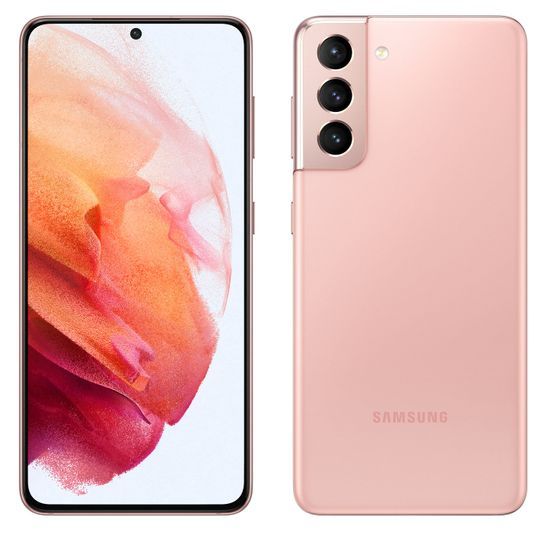
Samsung Galaxy S21
The other obvious change in design is the rear camera module. It’s got a much more unique look this year, with the camera module flowing over the corner instead of being an island. The camera bump is still present, but it has a larger surface area extending all the way to one corner. Therefore, the phones should have a lesser tendency to wobble when placed down on a table. The Galaxy S21 Ultra has the largest camera module because of the additional camera hardware.

Samsung Galaxy S21 Plus
Overall, the phones have an otherwise clean and understated look. The Samsung logo on the back is the only branding (coupled with other mandatory certification brandings as mandated by regional law). The devices have a USB 3.2 Type-C port and a speaker grille on the bottom, and the usual power button and volume rockers on the left. If you are waiting on the headphone jack making a return, you’ll be disappointed as it’s not present this year either. But on the bright side, the entire lineup is IP68 rated for water and dust protection.

Samsung Galaxy S21 Ultra
For biometrics, Samsung has once again opted for an ultrasonic in-display fingerprint scanner on the series, skipping out on both optical in-display and side-mounted fingerprint scanners. The ultrasonic fingerprint scanner used is the second generation 3D Sonic Sensor from Qualcomm, which is 1.7x larger and 30% faster than the previous generation ultrasonic fingerprint scanner. This ensures that you get a much better unlocking experience than ever before on a Samsung flagship.

Some of the RAM and storage variants may not be available in all colors. Further, the options are likely to be tweaked according to your region as well.

Further, some colors are Samsung.com exclusive. These include Phantom Red and Phantom Gold for the Galaxy S21 Plus, and Phantom Brown, Phantom Navy, Phantom Titanium for the Galaxy S21 Ultra. These colors are available in limited quantities only and are likely to be available only through the pre-order period.
SoC, RAM, and Storage
Samsung is following its usual pattern of splitting up device SoCs for the USA and some other selected regions, and for the rest of the world. The USA and regions like Hong Kong and China get the Qualcomm Snapdragon 888 SoC, while the rest of the world gets the Exynos 2100 SoC. We have dedicated coverage on these SoCs, and we encourage you to check them out for more details.
As is the general theme with the lineup, RAM and storage options on the Galaxy S21 Ultra are more in the overkill territory (12GB + 128GB, 12GB + 256GB, 16GB + 512GB), while the Galaxy S21 and Galaxy S21 Plus get more practical amounts (8GB + 128GB, 8GB + 256GB) to work with. Unfortunately, there is no microSD card support on any of these phones, so pick the right storage amount for you right off the bat.
Camera
The camera setup is one of the more defining differences between the Galaxy S21 and Galaxy S21 Plus on one hand, and the Galaxy S21 Ultra on the other. The Galaxy S21 and Galaxy S21 Plus have the same camera setup, while the Galaxy S21 Ultra changes things up a bit.
Galaxy S21 and Galaxy S21 Plus: Front and Rear Camera Setup

For the Galaxy S21 and Galaxy S21 Plus, you get a triple rear camera setup comprising of a primary camera, an ultra-wide-angle camera, and a telephoto camera.
The primary camera is a 12MP f/1.8 shooter with a 1/1.76″ sensor producing images with 1.8µm large pixels. You get Dual Pixel AF as well as OIS on the primary camera.
The secondary camera is a 12MP f/2.2 shooter with a 1/2.55″ sensor producing images with 1.4µm large pixels. The field of view is 120°, which isn’t the widest out there but also not a bad option per se.
The tertiary camera is a 64MP f/2.0 telephoto lens with a 1/1.76″ sensor producing images with 0.8µm large pixels. You get PDAF and OIS on this camera, and its primary use case is for capturing images with 3x optical zoom.
The front camera on both the phones is a 10MP f/2.2 shooter that produces 1.22µm pixel size images and has Dual Pixel AF.
Galaxy S21 Ultra: Front and Rear Camera Setup

The camera setup offers one of the highlighting experiences on the Galaxy S21 Ultra. Only the secondary ultra-wide-angle camera is shared over from the Galaxy S21 and Galaxy S21 Plus. All the other cameras are different.
The primary camera is a 108MP f/1.8 shooter with a large 1/1.33″ sensor producing images with 0.8µm large pixels. The phone then combines nine of these pixels into one pixel (nona-binning), giving you an output of 12MP with 2.4µm large pixels.
The other two cameras on the back come with telephoto lenses, each projecting into a 1/3.24″ sensor with large 1.22µm pixels. Using two telephoto lenses essentially provides optical zoom at two different levels. The first is a 10MP f/2.4 shooter that provides 3x optical zoom, while the second is a 10MP f/4.9 shooter that provides 10x optical zoom. Both come with OIS capabilities. Combined with digital zoom, Samsung can provide a seamless optical zooming experience from 1x to 10x, while also promising hybrid zoom capabilities up to 100x, which is marketed as 100x Space Zoom.
The Galaxy S21 Ultra can also shoot 4K video at 60fps across all cameras. If you need even more options, you can click photos in Pro mode to output to a 12-bit RAW file.
The front camera on the Galaxy S21 Ultra is a 40MP, f/2.2 shooter with 0.7µm pixels and PDAF.
What are the new Camera Features?
These new camera software features form a part of One UI 3.1 based on Android 11, but they are worth mentioning on their own as they are quite substantial to the camera experience on the new Samsung Galaxy S21 series:
- Improved 8K Snap: Grab still 33MP photos from your 8K video recording
- Vlogger View: Capture videos with the front and rear cameras simultaneously.
- Director’s View: Capture video with the front and rear cameras simultaneously, while retaining the ability to quickly switch between the multiple rear cameras while accessing a live preview of all the camera outputs.
- Multiple mic recording: Use paired accessories like the Samsung Galaxy Buds Pro to record ambient sound while also recording using the phone’s microphone.
- Single Take: Added new pro-style video settings like Highlight Video and Dynamic Slow-Mo.
- Zoom Lock: Minimize shaky hands and capture clear zoomed images by locking focal point in the center of the frame.

Battery and Charging
Because the phones are different in physical dimensions and have some other physical differences, they also have different sized batteries, going from 4,000 mAh on the regular Galaxy S21 to 4,800 mAh on the Galaxy S21 Plus and 5,000 mAh on the Galaxy S21 Ultra.
Thankfully, their charging capabilities remain the same all throughout (though that may not be a good thing entirely). All three phones get 25W USB Power Delivery 3.0 fast charging, 15W wireless charging, and the ability to provide 4.5W reverse wireless charging. The wired charging solution is definitely not the fastest one around, but it’s universal, so you’ll have great luck finding a compatible charger that does these modest speeds reliably. We are both relieved and disappointed at the same time — relieved for the universality approach, but disappointed because proprietary tech from other companies is quicker by a substantial margin. The universality will be appreciated by users, more so because neither of the three phones will come with a power brick in the box (except in select regions).
5G and Connectivity
5G is standard across the lineup, but a big difference creeps in for certain regions. For instance, if you purchase the device in the USA, you’ll get mmWave support alongside sub-6GHz 5G, while the rest of the world will have to contend with sub-6GHz 5G. So, do keep that in mind if you intend to use the phone outside the region of purchase.

Further, all three phones get Bluetooth 5.1 and NFC, but the Galaxy S21 Ultra gets Wi-Fi 6E support (thanks to the Broadcom BCM4389) while the other two models get Wi-Fi 6.
Ultra-Wide Band tracking is a feature present on the Galaxy S21 Ultra and the Galaxy S21 Plus, but it is missing from the regular variant.
S Pen support
One of the highlights of this year’s release is the inclusion of S Pen support. Only the Galaxy S21 Ultra gets it though, and there are a few caveats around it. For one, the S Pen is not part of the package, and there is no cavity within the device to store the S Pen, so it needs to be purchased separately and stored externally.

Samsung is separately selling cases that have a cavity to store the S Pen. You lose out on Bluetooth-related functionality on the S Pen though, so stuff like Air Trigger and Remote Shutter will not work. We reckon this means that you don’t necessarily need an S Pen too — just about any Wacom stylus should do the trick.
Samsung also plans to sell an S Pen Pro later in the year, so keep an eye on that if you really want to get into the stylus game with the S21 series.
MST Support and Samsung Pay
The Samsung Galaxy S21 series does not come with MST support, restricting itself to NFC technology for payments. The phone does support Samsung Pay in all regions, presuming the feature was already available in those regions.
One UI 3.1 with Android 11
The Samsung Galaxy S21 series comes with an incremental update to Samsung’s UX skin, One UI, in the form of One UI 3.1 based on Android 11. While there are not a lot of ground-breaking feature additions or overhauls, there are a few notable changes:
We have taken a more extensive look at the changes that One UI 3.1 brings along over One UI 3.0, so check that out for a more complete lowdown.
Cases and Accessories
As is tradition now, Samsung is offering a bunch of official cases for the Galaxy S21 Ultra, Galaxy S21 Plus and Galaxy S21. Their official cases include Smart Covers, a case with an S-Pen, a separate S-Pen, several gorgeous looking cases including the popular Kvadrat Cover+and more. Of course, the Galaxy S21 range is already proving popular and plenty of people are taking advantage of the best Galaxy S21 Ultra deals and best Galaxy S21 deals, which we’ve rounded up for you.
Beyond just Samsung’s official cases, there are a ton of third-party cases on the market and we’ve rounded them up for you including the Best Thin Cases for the Galaxy S21 Ultra, Galaxy S21 Plus, and Galaxy S21; the best rugged cases for the Galaxy S21 Ultra, Galaxy S21 Plus and regular Galaxy S21; and the best Clear cases for the S21 Ultra, Galaxy S21 Plus, and regular Galaxy S21 model.
Here are the official Samsung cases:

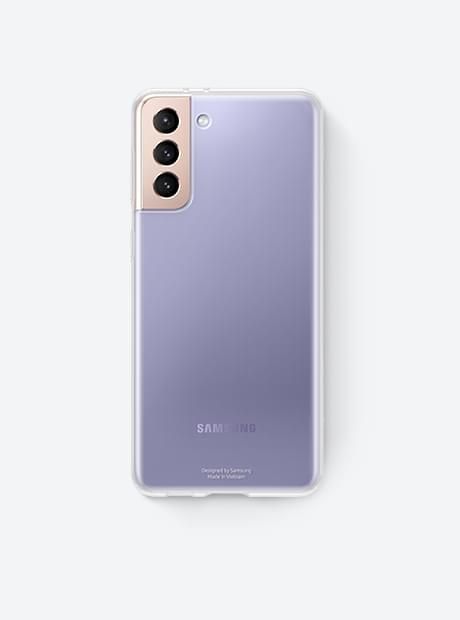
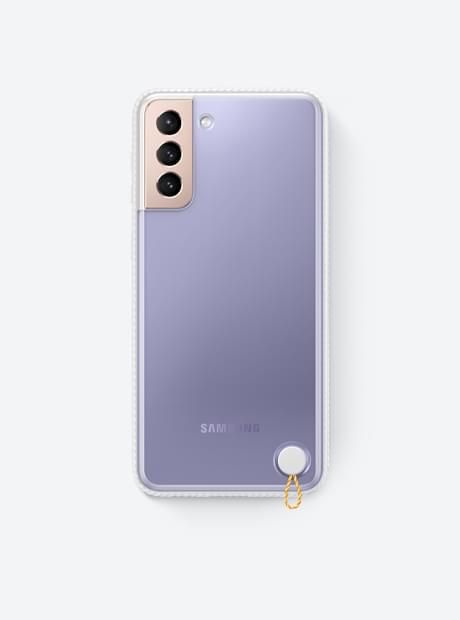





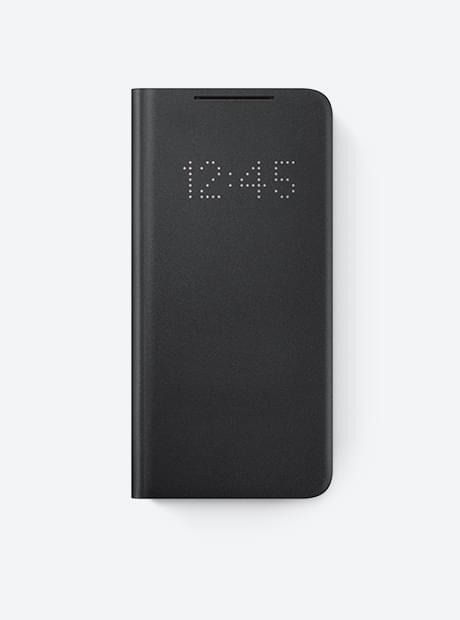

There are two more covers for the Galaxy S21 Ultra, and these come with the S Pen: Silicone Cover with S Pen, and Smart Clear View Cover with S Pen.
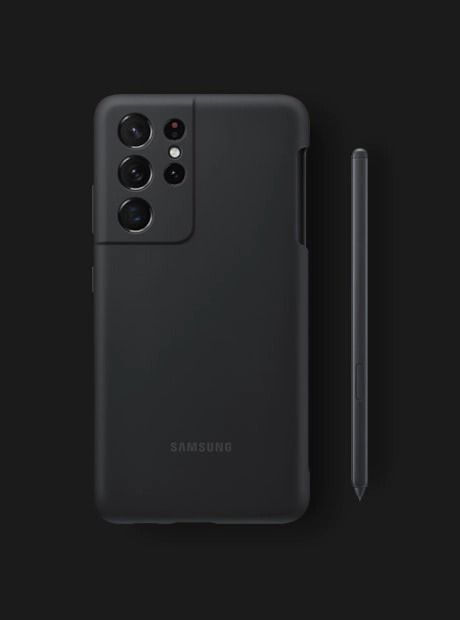

Samsung has also launched two new wireless chargers, as well as the Samsung SmartTag and Samsung Galaxy Buds Pro.
Samsung Galaxy S21 series: Pricing and Availability
The Samsung Galaxy S21 series is priced as follows:
| Sr. No. |
Device |
USA |
Europe |
UK |
India |
| 1. |
Samsung Galaxy S21 — 8GB + 128GB
(Phantom Violet, Phantom Gray, Phantom Pink, Phantom White) |
$799.99 |
€849 |
£769 |
₹69,999 |
|
Samsung Galaxy S21 — 8GB + 256GB
(Phantom Gray) |
$899.99 |
€899 |
£819 |
₹73,999 |
| 2. |
Samsung Galaxy S21 Plus — 8GB + 128GB
(Phantom Violet, Phantom Silver, Phantom Black) |
$999.99 |
€1,049 |
£949 |
₹81,999 |
|
Samsung Galaxy S21 Plus — 8GB + 256GB
(Phantom Black) |
$1,099.99 |
€1,09 |
£999 |
₹85,999 |
| 3. |
Samsung Galaxy S21 Ultra — 12GB + 128GB
(Phantom Silver, Phantom Black) |
$1,199.99 |
€1,249 |
£1,149 |
– |
|
Samsung Galaxy S21 Ultra — 12GB + 256GB
(Phantom Black) |
$1,299.99 |
€1,299 |
£1,199 |
₹1,05,999 |
|
Samsung Galaxy S21 Ultra — 16GB + 512GB
(Phantom Black) |
$1,399.99 |
€1,429 |
£1,329 |
₹1,16,999 |
Note: Additional colors will be sold through Samsung.com. These custom colors are limited in stock and may last only till pre-order periods.
The Samsung Galaxy S21 series is now available on open sale. You can purchase the device by following the links below! Consumers will be able to purchase the devices through Samsung.com, carriers, and online and offline retailers.
The Samsung Galaxy S21 is the starting point of the new 2021 flagship series, packing in a flagship SoC, along with a decent display and camera setup.
The Samsung Galaxy S21 Plus is the middle child in the new 2021 flagship series, packing in a flagship SoC and a premium build, along with a decent display and camera setup.
The Samsung Galaxy S21 Ultra is the ultimate overkill in the new 2021 flagship series, packing in a flagship SoC, a premium build, a great display, and an amazing camera setup, as well as all the extras expected on a premium flagship.
Which Galaxy S21 should you buy? Regular, Plus, or Ultra?
The Samsung Galaxy S21 series were available for pre-order from January 20 till January 28, 2021. Customers who pre-ordered a device received Samsung Credits worth $100 with the Galaxy S21, $150 with the Galaxy S21 Plus, $200 with the Galaxy S21 Ultra. All pre-orders also included a free Galaxy SmartTag. Both carrier and unlocked variants of the Galaxy S21 series went on open sale worldwide from January 29, 2021.
In India, customers who pre-ordered the device got a free Samsung Galaxy Smart Tag as well as Samsung Shop Vouchers up to ₹10,000. HDFC Bank customers got up to ₹10,000 cashback, while Samsung Upgrade plans offered an additional bonus of up to ₹5,000. Pre-orders began from January 15, 2021, and early deliveries for these began on January 25, 2021. Open sales began from January 29, 2021, across Samsung.com/in, Samsung Opera House, offline retail outlets, Amazon.in, Flipkart, Crome, and Reliance Digital.
Third-Party Cases and Accessories
Now that the Galaxy S21 series is available on open sale, you can get a fair few options across third-party cases and accessories. We’ve rounded some great options below:
All of these options are for the regular Galaxy S21 variant:
All of these options are for the Galaxy S21 Plus, the middle child in the family:
All of these options are for the Galaxy S21 Ultra, the premium top-tier flagship:
We’ll be trying out more accessories in the future, so stay tuned for further recommendations!
The post Samsung Galaxy S21: Everything you need to know about Samsung’s new flagship phone series appeared first on xda-developers.
from xda-developers https://ift.tt/3pfq9uF
via
IFTTT





























 Deiki (@Deiki_kun)
Deiki (@Deiki_kun) 